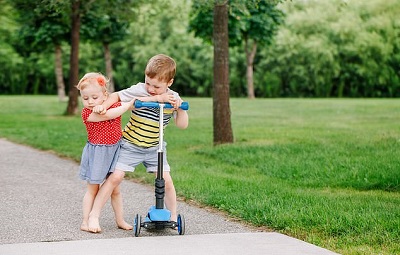Big brothers really are the biggest bullies, particularly for those in larger families.
A study has found when it comes to sibling name-calling, teasing and other types of mean behaviour, older boys tend to be the perpetrators.
Girls are more likely to be targeted by their siblings, especially if they are the babies of the family, according to Daily Mail.
Psychologists at the University of Warwick tracked the family dynamics of 6,838 siblings up until the age 12.
They found firstborn children and older brothers are the most likely to pick on others in their family, and jealousy about having to share may be the reason why.
Dr Dieter Wolke, who led the study from the psychology department at the university, said: ‘A firstborn child gets 100 per cent of parents’ attention, toys and playtime but that gets cut to 50 per cent when a second child is born, and it falls even further when more children come along.
‘So siblings turn into bullies because they are competing for attention or they are frustrated someone else is taking their parents away.
‘Teasing and name-calling may also be an attempt to get more focus from parents and more treats, like toys and snacks, by casting their siblings in a bad light so the parents like them less.’
Sibling bullying is usually psychological, most often involving name-calling. But hitting, kicking, pushing or shoving is also a popular tactic, along with making fun of other family members.
Just over seven per cent of siblings are bullies, the study found, while almost one in 10 are victims of sibling bullying.
But most children give as good as they get, making them both bullies and victims in their family, and children’s bad behaviour tends to start at around the age of eight.
Boys are the biggest bullies, being 69 per cent more likely to pick on their siblings, and older children are more than twice as likely to be bullies too.
These facts taken together mean children unlucky enough to have an older brother see their risk of being bullied rise by three-quarters.
Firstborn children with two or more siblings are 30 per cent more likely to be bullies, according to the findings.
Dr Wolke said: ‘Bullying occurs in situations where we cannot choose our peers, like in families. Siblings live in close quarters and the familiarity allows them to know what buttons to press to upset their brothers or sisters.
‘This can go both ways and allows a child to be both a victim and a perpetrator of bullying.’ Mothers reported how often their children were victims or perpetrators of bullying at the age of five. Children then provided the same information, on bullying that had happened in the previous six months, when they were 12.
N.H.Kh

